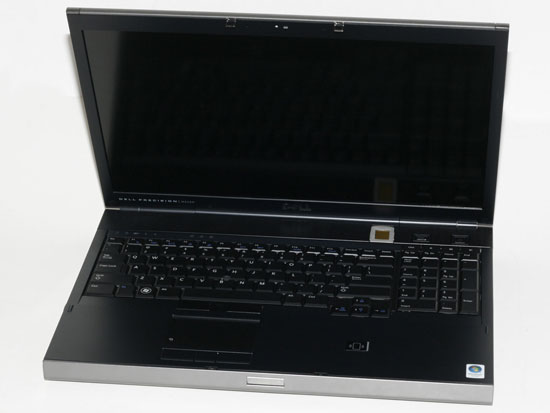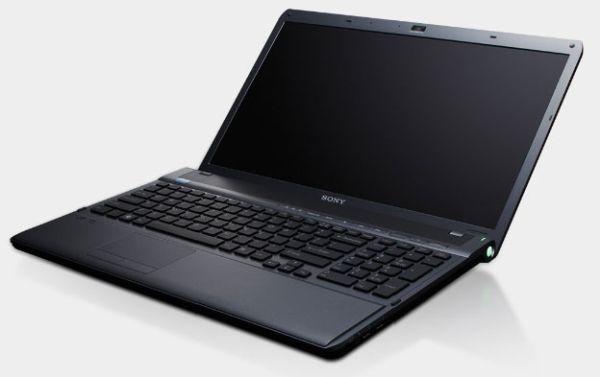Holiday Buyer's Guide: Notebooks
by Dustin Sklavos on November 15, 2010 9:00 PM EST- Posted in
- Laptops
- Guides
- Holiday 2010
Best Mobile Workstation: Dell Precision M6500 (Starting at $1700)
Figuring out the right workstation machine to recommend actually proved fairly difficult. Lenovo offers a healthy selection, but tend to be priced fairly high (though there's something to be said for a workstation that includes a built-in second screen). HP's EliteBook series offers their well-respected Dreamcolor screens, but those add a nasty $600 to the pricetag of the notebook.

In the end we went with the well-respected, well-known Dell Precision M6500. The M6500 is compelling because it offers all the accoutrement we want from a workstation: every form of modern connectivity, the most powerful Intel processors on the market, workstation-class graphics, and best of all, a 16:10 aspect RGB LED backlit screen. It's also capable of supporting up to four DIMMs of memory (maxing out at a staggering 32GB) and has three drive bays that can be configured for RAID. You can read more about it in our full review.
Put simply, the M6500 offers everything while starting at a reasonable price (currently $500 off at the time of writing!), and for that it's easy to see why it's our primary pick for a workstation notebook. Toss in a quad-core 740QM, 2x2GB RAM, and the stunningly beautiful RGB LED display and you're still looking at a fairly reasonable $2250.
Workstation Runner Up: Sony F Series (Starting at $1000)
Of course, if you can't afford the fat price tag on the M6500, you may find your options in the marketplace painfully limited. ExpressCard and FireWire are becoming increasingly rarefied, but Sony has your back with their F series. These notebooks were recently updated with the i7-x40QM processors and 400M GeForce parts, and they offer all the connectivity trimmings.
The flipside is that the Sony F series is a consumer-grade notebook capable of handling workstation-level tasks, but you lose a lot making the downgrade. You can still get a 1080p screen, but it's going to pale in comparison to the 1920x1200 RGB LED backlit screen the M6500 can bring to the table. You're also going to be reduced to a single drive bay, less memory, and less powerful graphics. Unfortunately, it also wins by default. Sony is really the only company outside of Apple producing notebooks with this level of connectivity for this market.
Other Alternatives?
We already mentioned the HP and Lenovo brands as being viable mobile workstation candidates. Lenovo has the 15.6" ThinkPad W510 starting at $1300, with a $250 95% gamut LCD upgrade available. The Quadro FX 880M is the workstation version of the GT 330M, which is at least a big step up from the anemic 360M. The bigger ThinkPad W701 and W701ds have similar features relative to the M6500, but with a starting price of $2500 ($3300 for the dual-screen model) you can understand why these are simply alternatives. HP's EliteBook line retreads the same ground: there's the Quadro FX 880M in the EliteBook 8540w, only with a fast dual-core i7-640M, or the larger 8740w bumps up the size, performance, options, and price. Like HP and Lenovo, Dell also has the smaller Precision M4500 available in a 15.6" chassis.
If your work is buying the workstation, our recommendations probably won't matter much—you get whatever the IT department decides—but unless you have a sale or other special offer, Dell looks to win handily in bang-for-the-buck.











50 Comments
View All Comments
Cuhulainn - Monday, November 15, 2010 - link
Though I agree with your subject, I'd disagree with the rest. If what you say were true, you'd see high quality LCD options on every laptop, and no glossy plastic enclosures. Manufacturers will continue to make what they believe meets the needs of the market, regardless of what review sites say. Sure, they have some influence, but it's not as though their hands are tied because of these review sites.I like to have the option, especially with Optimus and the like negating power concerns. If volume and weight are concerns, there are still plenty of options without discrete GPUs.
Relax.
beginner99 - Tuesday, November 16, 2010 - link
this.And most casual gamers play on console anyway and not pc.
I would easly pic a i3 IGP + mate 16:10 screen over a discrete one with useless a glossy 16:9 screen.
But for that you need to pay the 500$ "business fee", meaning less power for a 150% price tag.
BrooksT - Monday, November 15, 2010 - link
Could you guys *be* less professional?How about "if you're willing to pay a premium for design and build quality, and accept somewhat lower performance", etc.
Calling it an "Apple tax" is as silly as talking about the "Intel tax" if you opt for a super-premium CPU. Governments impose taxes; companies offer competing value propositions.
And then you get the whole implication that you don't get anything for a tax, which takes us into the political realm.
Please, guys, grow up a bit and take Anandtech in the direction of actual journalism. It's a premium, a tradeoff, a sign of different priorities, a trap for the unwary even, but it is most certainly not a "tax" by any remotely sane definition of the word.
max347 - Tuesday, November 16, 2010 - link
This comment is ridiculous.Obviously someone is getting too old for technology. "actual journalism" is found in newspapers....which my 50 year old dad doesn't even read anymore.
"Apple tax" is a common, well-known piece of jargon. Perfectly acceptable considering the audience and medium.
If you want PC language with oldtyme verbiage and stiffly written articles, read a newspaper. I think the way these articles are presented is just fine.
Aslo though, you could start up your own tech review site, and see how that turns out. I am betting if you take the "actual journalism" route you outline, you will have every stickler and wise guy tearing apart every little mistake in an article. Presented the way they are here, readers can more comfortably approach the writers, and have more of a discussion-style look at the product in question. This is why companies send them things to review- they get feedback. With a stringent fact-article approach, I don't think you would see this level of interaction.
JonBird - Tuesday, November 16, 2010 - link
I totally agree. It was an uncharacteristically low brow comment from a site that I think of as being in the top tier of tech journalism. Aanand must not have edited this article because he would never discredit his site by using this type of non-descriptive fanboy meme.JarredWalton - Tuesday, November 16, 2010 - link
I'll just say this: I specifically asked Anand to look over the MacBook page and make any comments/edits he saw necessary. What you didn't offend him, and he uses a MacBook Pro 15 all the time. Even he will admit that you pay a significant price premium for what amounts to build quality and aesthetics, and that is the "Apple tax" so often referred to. It's such a well-known term that you can even Google definitions, and get stuff like this:http://www.pcmag.com/encyclopedia_term/0,2542,t=Ap...
Osamede - Tuesday, November 16, 2010 - link
Whatever you want to cal it - "Apple tax" is really a polite way of putting it. If someone wanted to be more provocative they could even call it an "Apple cult fee". And Even the marketing term for this: "brand premium" is itself a euphemism for commanding a price over and beyond the intrinsic value of the product when separated from the brand loyalty.A good example of this is the new Macbook Air products. Basically you have in the 11" version what is little more than an Acer 1810 encased in a shiny aluminum package with a few ounces shaven off and the price doubled. The main real value in there is the better screen and that alone cannont explain Apple's blatant price gouging on 2-3 year old CULV products.
So I would say, let them call it what they will. Apple is definitely charging more than what the products are intrinsically worth.
Spazweasel - Tuesday, November 16, 2010 - link
"Intrinsic worth" is subjective.If you add up the cost of components, you don't get to call that "intrinsic worth", because assembly isn't free. Neither is design and engineering. Many people assign no value to this, and that's just plain wrong. Apple spends more on engineering and design than most other companies, and you pay your share of it. Apple's not the "R&D and manufacturing welfare company", nor is Dell or HP or Lenovo or Asus or any other laptop maker.
You also get OS/X with your MacBook, and that's not free either (and please, no BS about "it's FreeBSD/Mach", that's a tiny part of the operating system as a whole). If you choose to throw away the OS and run something else on it, fine, but you're going to pay your amortized part of OS/X's development anyway.
Look, if you don't value where the "extra" money is going, fine, DON'T BUY IT. You're saying "if I, and only I, don't value it, it has no value to anyone and should therefore be free".
Dustin Sklavos - Tuesday, November 16, 2010 - link
Respectfully, Apple's reported profit margins border on the offensive.You would LIKE to justify the increased cost based on all the things you listed, but judging by Apple's current liquidity I'm gonna go ahead and say these things have already been paid for. The rest is just gouging the consumer.
misaki - Monday, November 15, 2010 - link
I believe you guys have the model number wrong for the 2nd asus netbook, 1015pn-mu17 doesn't exist. Your link goes to 1015ped-mu17 which has the n455.1015pem is the n550 counterpart with integrated intel gpu that has 2 versions. MU17 is cheaper by leaving out bluetooth 3.0 and has a smaller battery than PU17.
(I happened to be looking at netbooks recently)